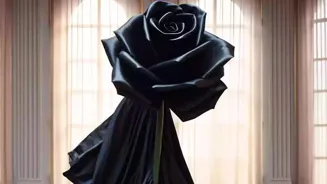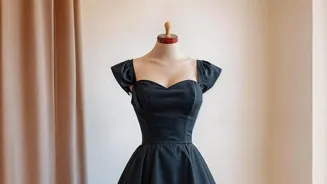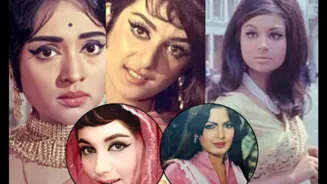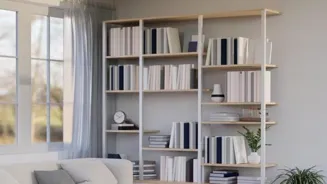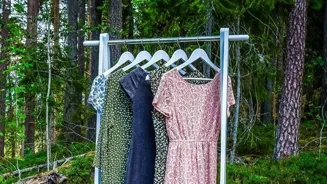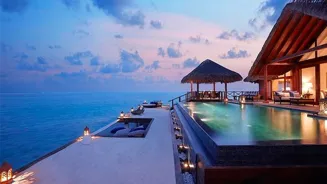Dive into Fashion History: Iconic Styles That Defined Decades! Explore how trends reflect societal shifts and cultural movements. Journey through time and witness fashion's powerful storytelling. Read
more to unravel the evolution of style!
Fashion, bhai! It's not just about clothes, no? It's a mirror reflecting our society, our dreams, and even our mood swings. From the elegant drapes of the past to the bold statements of today, fashion has always been a powerful storyteller.
Let's rewind the clock and take a dekko at some iconic styles that have truly shaped the decades, leaving an indelible mark on our wardrobes and our imaginations. We'll see how simple changes, inspired by big events, have led to trends that we still love today. Ready to travel through time?
Let’s begin!
1920s fashion: rebellion, freedom, glamour, and societal change through flapper style and Art Deco influence
First, let's go all the way back to the 1920s, a decade of big change and jazzy vibes! After World War I, people were ready to let loose and have some fun. The fashion scene exploded with shorter hemlines and looser silhouettes.
The flapper dress, with its dropped waist and embellishments, became the symbol of this newfound freedom. Think beads, sequins, and feathers – the more sparkle, the better! Women also started sporting shorter hairstyles like the bob, which was considered quite daring at the time.
These changes in attire were not frivolous, but echoed larger sociological shifts and gave women more freedom in motion. Imagine ditching the heavy, restrictive clothes of the past for something that let you move and dance the night away.
It was all about breaking free from old traditions and embracing a more modern outlook. And let's not forget the influence of Art Deco, with its geometric patterns and luxurious materials, which added a touch of glamour to the era.
Fashion became an expression of rebellion, optimism, and the desire to live life to the fullest. As women began to enter the workforce in greater numbers, their clothes needed to reflect this active lifestyle which further influenced the shift in garment styles.
Isn’t it amazing how fashion can capture the spirit of an entire generation?
1950s fashion: post-war glamour, Dior's "New Look," elegance in silhouette, timeless style
Now, zoom forward to the 1950s, a time of post-war prosperity and classic elegance. After years of wartime austerity, fashion embraced femininity and glamour once again. Full skirts, cinched waists, and elegant dresses dominated the scene.
Christian Dior's "New Look" was a game-changer, ushering in an era of sophisticated silhouettes and luxurious fabrics. Think of Audrey Hepburn's iconic style – graceful, timeless, and oh-so-chic. And let's not forget the importance of accessories.
Gloves, pearls, and hats were essential for completing any outfit. While the styles of this decade were very prim and proper, they certainly had a sense of style that is still reflected today. The goal was to create a harmonious balance between elegance and sophistication.
Even casual wear took on a refined appearance, with carefully coordinated separates and impeccable tailoring. This era of classic elegance continues to inspire designers and fashion enthusiasts today, proving that timeless style never really goes out of fashion.
The focus was on creating an image of understated glamour, celebrating the beauty and grace of womanhood. This era reminds us that comfort and sophistication can walk hand-in-hand, enhancing one's sense of self and personal style.
The 1960s: Youthquake, self-expression through fashion, cultural change, music icons
Next stop, the 1960s, a decade of youthquake and revolutionary style! This era was all about breaking the rules and experimenting with new looks. Think of mini skirts, bold colors, and psychedelic prints.
Fashion became a form of self-expression, reflecting the social and cultural changes of the time. London was the epicenter of cool, with designers like Mary Quant leading the way. The mod look, with its clean lines and geometric shapes, was all the rage.
And let's not forget the influence of music icons like The Beatles and The Rolling Stones, who set trends with their distinctive styles. The decade saw the rise of youth culture, with teenagers and young adults becoming a powerful force in shaping fashion.
These youth movements were not simply about clothing choices; they represented a cultural awakening. Clothes echoed rebellion, new attitudes, and a fierce spirit. The clothes people wore were a declaration of their identity and beliefs, reflecting the changing times and the power of youth culture.
Ultimately, the garments of this era served to not only adorn the body but to express individuality and freedom.
The 1970s: A Decade of Diverse Fashion Trends and Individuality
Let's boogie on over to the 1970s, a decade of diverse trends and individuality! Bell-bottom jeans, platform shoes, and bohemian dresses were all the rage. Fashion became more relaxed and eclectic, reflecting a growing sense of freedom and experimentation.
Think of the disco scene, with its glitter and glamour, and the punk movement, with its rebellious attitude. Everyone was finding their own unique style, whether it was rock 'n' roll glam or earthy chic.
The '70s encouraged people to express themselves through their wardrobe choices, embracing a range of styles that reflected various subcultures. The focus was on comfort and self-expression, rather than adhering to strict fashion rules.
The use of different fabrics, textures, and patterns allowed people to showcase their personality. Ethnic influences, such as Indian prints and African textiles, were also popular, adding a touch of global flair to the decade's fashion.
The era reflects this beautiful sentiment by taking inspiration from all over the world. And the message was clear: fashion should be fun, creative, and a reflection of who you are. Fashion should be fun, always remember that and you'll create timeless looks.
The 1980s: Bold fashion statements reflecting ambition and self-expression
The 1980s! A decade of power dressing and bold statements! Shoulder pads, neon colors, and big hair were the defining features of this era. Fashion became a way to assert yourself, whether it was in the boardroom or on the dance floor.
Think of power suits, with their strong silhouettes and confident appeal, and the rise of sportswear as everyday wear. Everyone was looking for ways to stand out, whether it was through bold colors, oversized accessories, or statement jewelry.
The rise of music videos and MTV had a huge influence on fashion trends, with pop stars like Madonna and Michael Jackson becoming style icons. The '80s proved the power of fashion as a means of self-expression but also a symbol of ambition and success.
The 1980s also embraced individuality and experimentation, encouraging people to push boundaries and embrace their unique sense of style. Overall, fashion in the 1980s was exuberant, confident, and a reflection of the decade's dynamic energy.
People were ready to stand out and make a statement, transforming their wardrobes into a reflection of their aspirations.
The 1990s: Minimalism, grunge, and inclusive fashion revolution
Finally, let us look back on the 1990s which brought a wave of minimalism and grunge. This decade saw a shift away from the extravagance of the 80s. Think of slip dresses, oversized flannels, and combat boots. Fashion became more relaxed and casual, reflecting a desire for comfort and authenticity.
Designers like Calvin Klein and Helmut Lang defined the era with their minimalist aesthetic. The grunge movement, inspired by bands like Nirvana, brought a rebellious edge to mainstream fashion. This decade was all about embracing individuality and rejecting traditional notions of glamour.
The 90s also saw the rise of streetwear, with brands like Nike and Adidas becoming increasingly popular. Fashion became more inclusive and diverse, with a greater emphasis on personal style. This freedom allowed people to express themselves without feeling pressured to fit into a certain mold.
The 1990s marked a significant step toward a more democratic and inclusive fashion landscape, reflecting a society that valued authenticity and self-expression above all else. This meant more people could be involved in the creative process and more people could express themselves through clothing.
